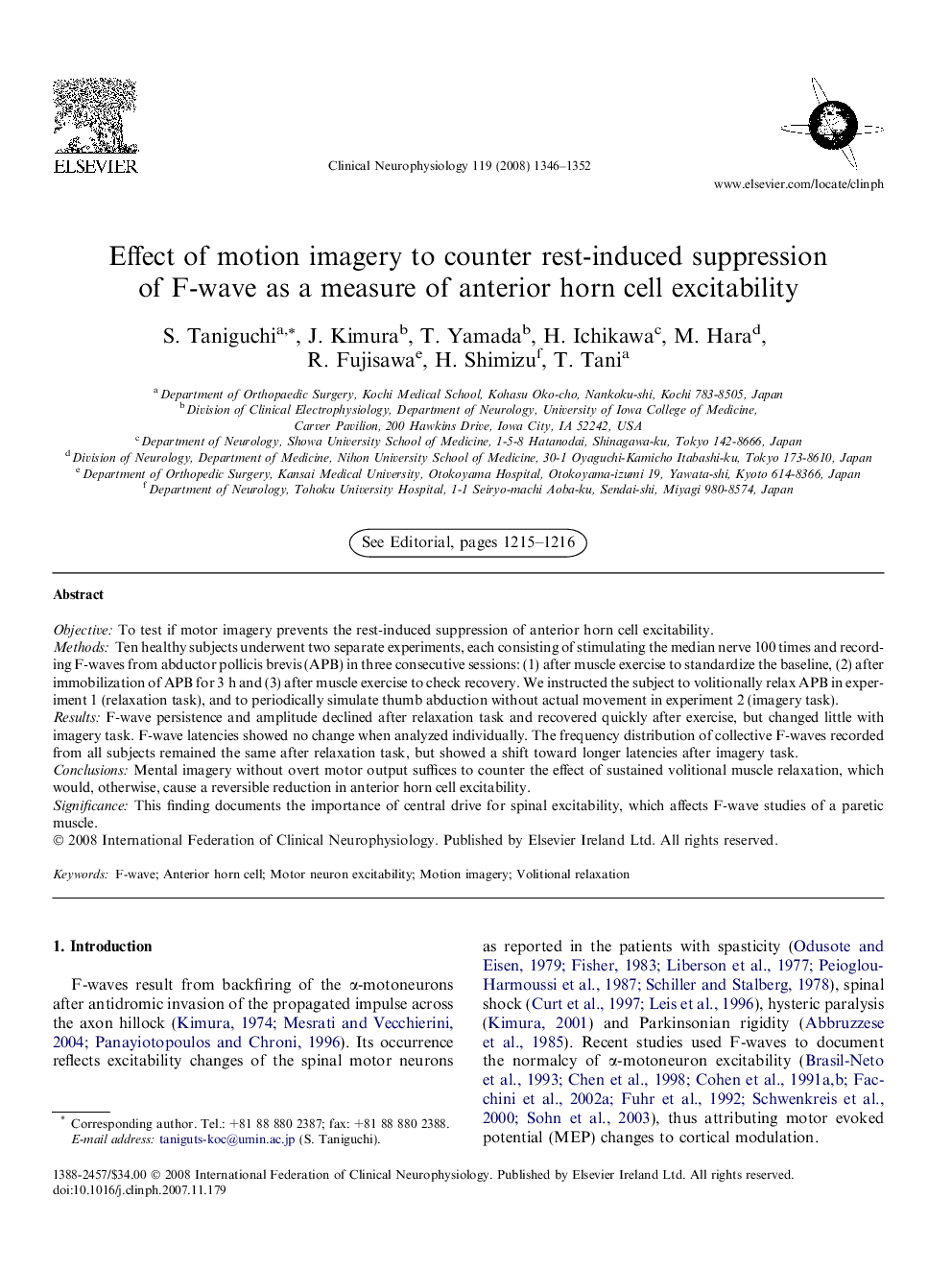| Article ID | Journal | Published Year | Pages | File Type |
|---|---|---|---|---|
| 3047453 | Clinical Neurophysiology | 2008 | 7 Pages |
ObjectiveTo test if motor imagery prevents the rest-induced suppression of anterior horn cell excitability.MethodsTen healthy subjects underwent two separate experiments, each consisting of stimulating the median nerve 100 times and recording F-waves from abductor pollicis brevis (APB) in three consecutive sessions: (1) after muscle exercise to standardize the baseline, (2) after immobilization of APB for 3 h and (3) after muscle exercise to check recovery. We instructed the subject to volitionally relax APB in experiment 1 (relaxation task), and to periodically simulate thumb abduction without actual movement in experiment 2 (imagery task).ResultsF-wave persistence and amplitude declined after relaxation task and recovered quickly after exercise, but changed little with imagery task. F-wave latencies showed no change when analyzed individually. The frequency distribution of collective F-waves recorded from all subjects remained the same after relaxation task, but showed a shift toward longer latencies after imagery task.ConclusionsMental imagery without overt motor output suffices to counter the effect of sustained volitional muscle relaxation, which would, otherwise, cause a reversible reduction in anterior horn cell excitability.SignificanceThis finding documents the importance of central drive for spinal excitability, which affects F-wave studies of a paretic muscle.
